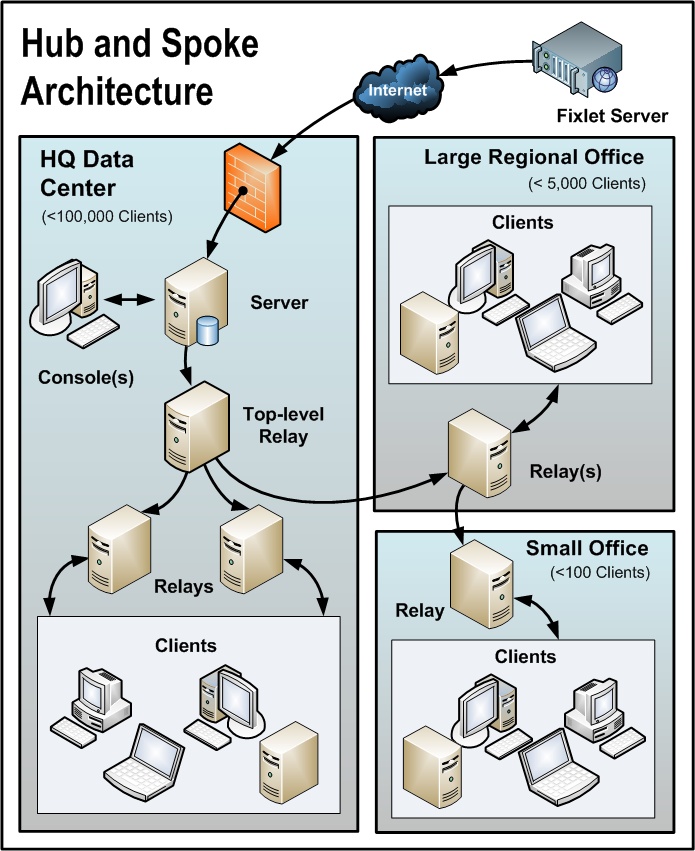Hub and spoke
This scenario involves a main data center, a small number of large regional offices, and many small regional offices.
This configuration is common in large international organizations. The BigFix clients are installed on computers in offices all around the world. Many of these locations have slow WAN connections (8 kbps-512 kbps), but there are many offices with faster WAN connections (1mbps-45mbps).

Often these locations are configured in a hub-and-spoke arrangement. This scenario builds on the previous one, but the hub-and-spoke configuration permits more levels in the relay hierarchy.
Note the following about the diagram:
- In this scenario, the relays are carefully deployed at the proper junctions within the WAN to optimize bandwidth. Poor placement of relays can adversely impact your network performance.
- It is vital that at least one relay is installed in every location with a slow WAN connection. Often a company already has a server in just such a location, acting as a file server, print server, AV distribution server, SMS distribution server or domain controller, or any other computer. The BigFix relay is usually installed on these existing computers.
- To provide redundancy in a typical office, more than one relay should be installed. If a relay fails for any reason (powered down, disconnected from the network, and so on.), its attached clients can then automatically switch over to a different relay. A redundant relay is less important in very small offices because fewer computers are affected by the failure of a relay.
- When the clients are set to Automatically Locate Best Relay, they will choose the closest one. If any relay fails, the clients automatically seek out another relay. You should monitor the relay configuration after the initial automated setup (and periodically after that) to ensure that the clients are pointing to appropriate locations. Talk to your support technician for more details about how to protect against overloading WAN pipes with BigFix data.
- Bandwidth throttling at the relay level is very helpful in this configuration. The BigFix relays are set up to download slowly across the WAN pipes so as not to saturate the slow links. For more information, see https://bigfix-wiki.hcltechsw.com/wikis/home?lang=en-us#!/wiki/BigFix%20Wiki/page/Bandwidth%20Throttling.
- Instead of pointing to the main server, the relays are configured to point to the top level relay. This frees up the server to couple more tightly to the console and improves reporting efficiency.
The BigFix relays are configured to manually create the optimal hierarchy. The hierarchy has three levels (from the top down):
- The top-level relay that connects directly to the server.
- The regional office relays that connect to the top-level relay.
- Multiple branch office relays that connect to specified regional office relays.